QR codes in the tourism industry have made the travel experience easier and more convenient. Contactless check-ins, mobile payments, access to up-to-the minute travel information, interactive destination guides, special promotions on local attractions and events — all this and more is available at your fingertips through your smartphone, thanks to QR codes.
In this article, we’ll review what QR codes are, discuss the advantages of QR codes in the tourism industry, highlight where to use QR codes in the tourism industry, and share a few Jotform resources that can help you put them to use.
Pro Tip
Enhance the tourism experience with QR codes. Create interactive solutions effortlessly using the QR Code Generator.
The function and benefits of QR codes
A QR code (or quick response code) is a two-dimensional code that can contain information such as website addresses, phone numbers, maps and directions, access to payment portals, information about a company’s products and services, and more. The built-in QR code reader on your smartphone lets you scan the code to instantly connect to these resources.
QR codes can be static or dynamic. Static QR codes contain information that isn’t meant to change, like contact information or website addresses. With dynamic QR codes, you can update information in real time as necessary, making them ideal for promotions, local weather updates, schedule changes, and so on.
There are many reasons to use QR codes in the tourism industry, several of which we’ll cover in more detail here. In a nutshell, their ease of use and convenience make them especially beneficial tools for the tourism industry.
For example, travelers can use QR codes to check in for flights or hotel reservations, view restaurant menus, get directions to local tourist destinations, make contactless payments, access special promotions, and translate resources into their own language, among other things. Essentially, QR codes can make every part of the travel experience a lot easier.
The rise of QR codes in the tourism industry
The widespread adoption of QR codes in the tourism industry is partly related to their ease of use and partly due to COVID-19, which hit the travel and tourism industry harder than just about any other.
During the pandemic, QR codes offered a safe, contactless way for travel and hospitality brands to continue offering some level of service while keeping customers safe. Touchless capabilities via QR codes decreased wait times and made travel a little safer by allowing customers to check in, check luggage, and pay using their smartphone rather than via human interaction.
Once travelers experienced these benefits, many didn’t want to go back to the previous system, with its friction and delays. The result was an increased use of QR code technology in the tourism sector and greater adoption of online, smartphone, kiosk, and other contactless ways of taking care of travel-related tasks.
The advantages of using QR codes in the tourism industry
There are many ways using QR codes can benefit tourism-related businesses. Here are just a few of their advantages.
They provide a better experience for travelers. The main benefit of QR codes by far is how much they simplify and improve the travel experience for tourists. QR codes provide access to the most up-to-date travel information, assistance with itineraries, help with directions and navigation, details about excursions and local attractions, public transportation schedules, 3D views of must-see landmarks, audio guides in the travelers’ native language, and more.
Scanning QR codes to see links, photos and other content eliminates the need to carry physical guidebooks, brochures, or maps. Similarly, QR codes make it possible for travelers to access hotel reservations, boarding passes, travel itineraries, event tickets, and the like with their smartphone, reducing the time they have to spend waiting in long lines for in-person assistance.
They offer a more immersive travel experience. By scanning a QR code, travelers can open up a rich world of interactive tours that allow them to explore historical sites, important landmarks, museums, and other sights in a more engaging and in-depth way.
They’re versatile. QR codes are a simple way to share everything from boarding passes and interactive destination guides to payment and check-in portals and much more.
They’re a sustainable solution. Because travelers can use QR codes to access resources online, the need for printed materials like guides, brochures, maps, and tickets is significantly reduced or eliminated altogether. This creates a more sustainable, eco-friendly experience for tourists and the destinations they visit, and they significantly reduce printing costs for businesses.
They increase accessibility. By providing different QR codes for different languages, you can allow tourists to access information in their preferred language, reducing communication obstacles and making travel more accessible and inviting for all.
They provide the ability to track analytics and data insights. The integration of GPS technology and the ability to store large amounts of data makes QR code analytics a rich source of customer preferences and user behavior. Businesses can use this information to improve customer service and create better marketing strategies.
They have a lot of data storage capacity. QR codes can store large amounts of data, much larger than their barcode counterparts. This makes it possible for tourist destinations, hotels, and other travel-related companies to offer a variety of resources to travelers in a single QR code.
Ways to use QR codes in the tourism industry
There are many practical applications of QR codes in the tourism industry. Here are 10 specific ways to use them.
- Collect feedback: Getting customers to write reviews can be a challenge. Asking for customer reviews and feedback is much easier with feedback forms paired with QR code capabilities. Simply add a QR code to any feedback form using a QR code form, then place the code on receipts, labels, and other highly visible places where customers will come into contact with it.
- Increase event registrations: Hotels and other tourism businesses can increase event registrations by making the registration process as seamless as possible. Simply choose the right event registration form template from Jotform’s extensive collection of over 400 templates, download a QR code for it, then place the code in a visible place where people can easily scan it.
- Receive contactless orders: It’s easy to receive contactless restaurant orders by using a restaurant order form template. Select an order form, customize the form template, and embed it on your website. Then add your QR code to the form and share the code with your customers to make it easily accessible.
- Receive contactless payments: Hospitality and travel-related businesses can create QR codes specifically for offering contactless payments. Travelers can use QR codes to access a payment portal and easily pay for products or services using their smartphone — no human interaction required. Or, you can use one of Jotform’s 300-plus payment form templates and generate a QR code for it. Display the QR code wherever your customers typically pay; they’ll be able to scan the code using their smartphone to send their payment directly.
- Offer contactless check-ins: Most hotels, airlines, tourist attractions and other travel-related businesses now offer QR codes that allow self-service check-in. This helps reduce long lines and wait times, making the process faster and more convenient for travelers.
- Provide easy access to tourist information: As previously mentioned, QR codes are ideal for providing tourist information with one swipe via a smartphone, including interactive travel guides, maps and directions, public transportation schedules, details about excursions and local attractions, and more.
- Increase your social media following: Travel companies can ask current and potential customers to follow their social media channels. With one scan of a QR code, they can easily hit “follow,” then receive travel updates, tour schedules, and information about contests and special promotions, upcoming events, and more.
- Offer easy navigation with location QR codes. QR codes are useful for helping tourists find parking, restaurants, restrooms, and other resources at large tourist attractions like theme parks.
- Advertise promotions and specials: Travel companies can direct tourists to scan a QR code to gain access to special limited time offers as part of an overall marketing campaign.
- Share info about local festivals and events: Municipalities and businesses can post QR codes in high-traffic tourist areas to advertise upcoming events in their area.
In addition to the 10 applications mentioned above, there are many other ways to use QR codes in the tourism industry. They’re also a useful way to
- Offer virtual tours, museum visits and other self-guided excursions
- Give hotel guests access to local weather reports, transportation information, info about local attractions, and more from their hotel room
- Raise awareness about conservation efforts in the travel destination
- Allow travelers to download apps to transportation resources like buses, trains, and airlines
- Create a scavenger hunt via QR codes travelers scan at each stop to entice them to visit more sites in each locale
- Educate travelers about historical sites and landmarks
- Share rules, policies, and procedures
- Share links to catalogs and other shopping venues
It’s easy to create QR codes for any online form using Jotform’s QR code forms. You can share your form with a QR code, include a QR code within your form, or add a QR code reader to your form, all without doing any coding. Learn more about how to create a QR code for a form.
Plus, after you collect information with QR code forms, you can easily track responses with Jotform Tables. Jotform Tables lets you collect, organize, and manage data in an all-in-one workspace, send data to other platforms, automatically create PDFs, and much more. It’s another way Jotform makes things a lot easier for your business.
Photo by Andrea Piacquadio




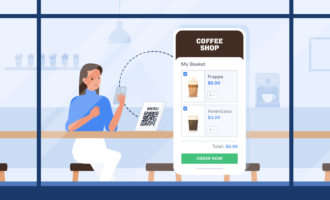















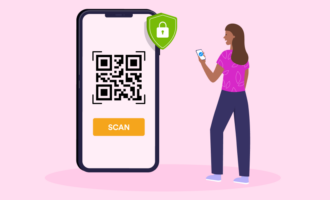

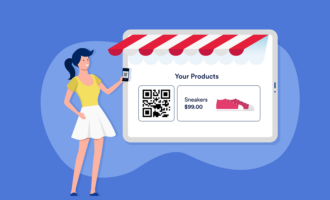













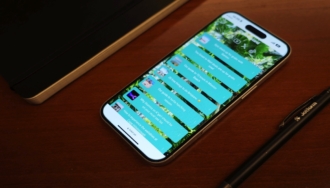





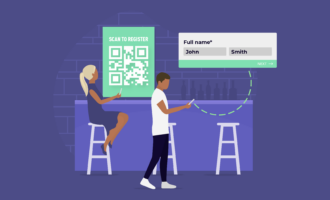













Send Comment: